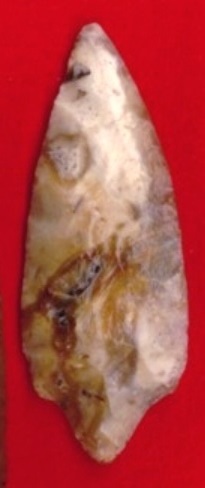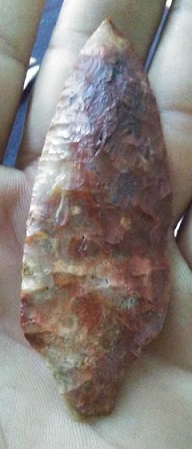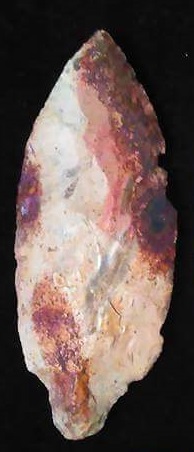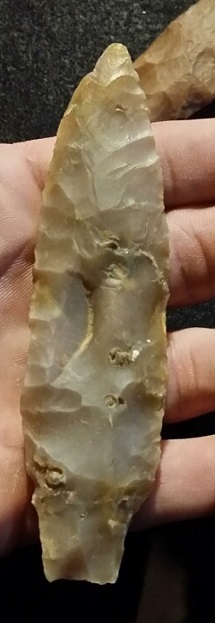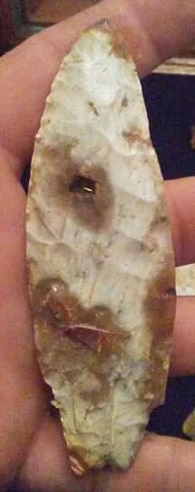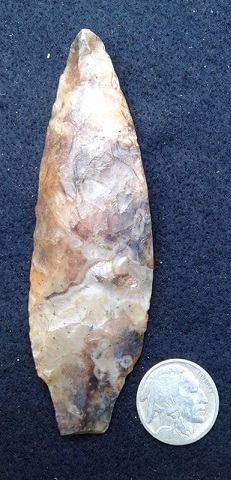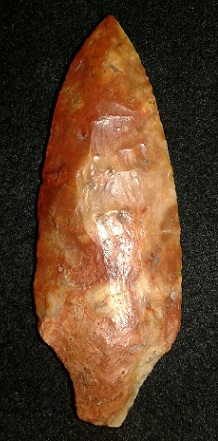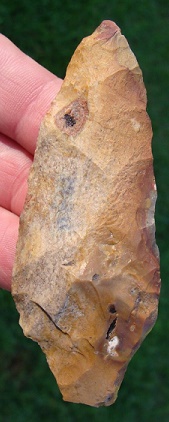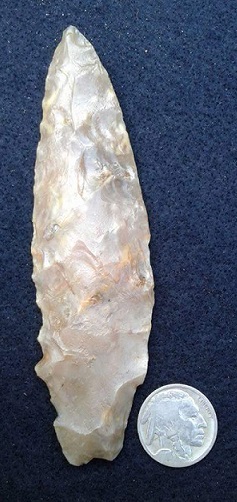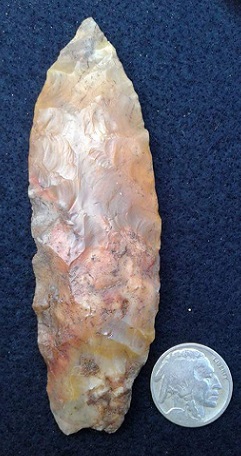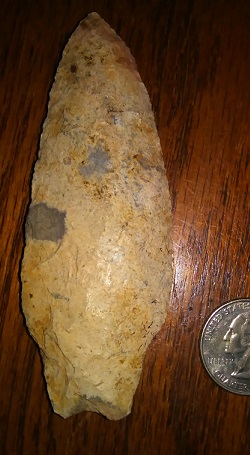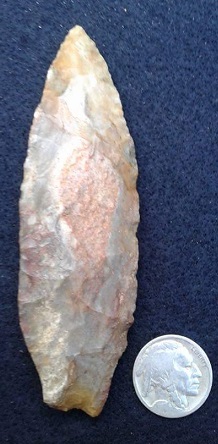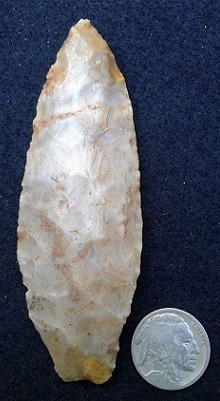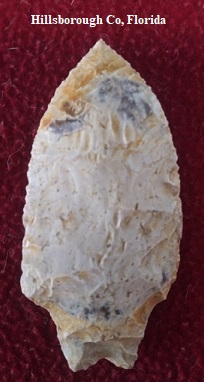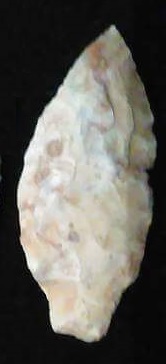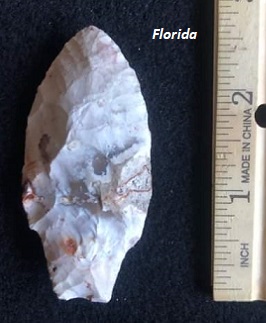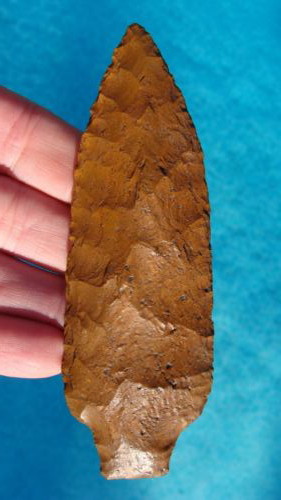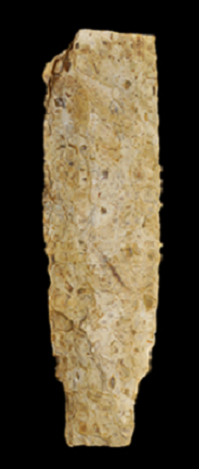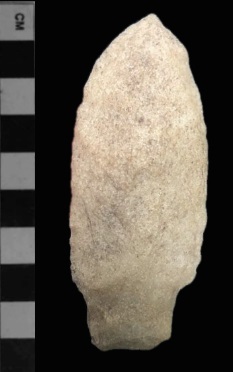Outline is Representative of Size and Shape:
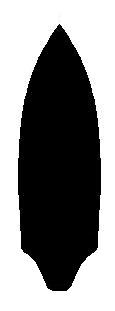
Name Details:
Identified By:Described by Lyman Warren / Named by Ripley P. Bullen
Named For: Lake Thonotosassa, Hillsborough County, Florida
Date Identified: 1971 / 1975
Type Site: Fletcher Davis (8HI106) site, Hillsborough County, Florida
Identified By:Described by Lyman Warren / Named by Ripley P. Bullen
Named For: Lake Thonotosassa, Hillsborough County, Florida
Date Identified: 1971 / 1975
Type Site: Fletcher Davis (8HI106) site, Hillsborough County, Florida
Point Validity:
Valid type
Bullen was a distinguished anthropologist and Curator Emeritus of the Florida Museum of Natural History. He was dedicated to identifying and typing projectile points from Florida. This point was named in a professional publication and is professionally a widely recognized type. This is a valid type.
Thonotosassa Stemmed
AKA: Palm River (Gray 1975)Cluster: Ledbetter Stemmed Cluster
Edited by William Lunsford
Description of Physical Characteristics and Flaking Pattern:
This is a long thick large (3.5 to 6 inches) lanceolate stemmed point with an elliptical cross section. Some examples have a median ridge on one face. The blade is primarily excurvate. The shoulders may range from horizontal to having an upward angle. The shoulder are commonly weak, and asymmetrical with one should angling up and one shoulder horizontal. The stem may vary from straight to contracting with a straight to convex base. This point has a random flaking pattern.
Size Measurements:
Total Length - 85 to 160 mm, Stem Length - 10 to 20 mm, Blade Width - 30 to 53 mm, Thickness 10 to 15 mm
Total Length - 85 to 160 mm, Stem Length - 10 to 20 mm, Blade Width - 30 to 53 mm, Thickness 10 to 15 mm
Commonly Utilized Material:
Additional Comments:
Gray (1975) describes a point he named "Palm River", but the characteristics of that type and this type are felt to be the same and should not be identified as a separate type
Bullen (1975) noted that there were 4 subtypes to this point. Sub-type 1 has a contracting stem with a convex base. Sub-type 2 gas a contracting stem with a flat base. Subtype 3 has a contracting stem with a concave base. Sub-type 4 has a broad square base.
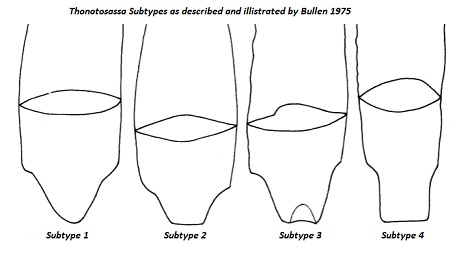
Gray (1975) describes a point he named "Palm River", but the characteristics of that type and this type are felt to be the same and should not be identified as a separate type
Bullen (1975) noted that there were 4 subtypes to this point. Sub-type 1 has a contracting stem with a convex base. Sub-type 2 gas a contracting stem with a flat base. Subtype 3 has a contracting stem with a concave base. Sub-type 4 has a broad square base.

Distribution:
Distribution Comments:
This point is primarily found in the Tampa region and into central Florida.
This point is primarily found in the Tampa region and into central Florida.
Age / Periods:
Date: 7,000 - 5,500 B.P.
Cultural Period: Middle Archaic
Glacial Period: Middle Holocene
Culture:
Phase:
Date: 7,000 - 5,500 B.P.
Cultural Period: Middle Archaic
Glacial Period: Middle Holocene
Culture:
Phase:
Age Details:
Farr (2006), notes "Thonotosassa points are found in aceramic (pre-ceramic) contexts including Sumter points. It is suggested that their terminal dates are similar to Sumter, ca 5,500 B. P". However, he states that he felt that there was not an early placement of this point as there is the Sumter point.
Farr (2006), notes "Thonotosassa points are found in aceramic (pre-ceramic) contexts including Sumter points. It is suggested that their terminal dates are similar to Sumter, ca 5,500 B. P". However, he states that he felt that there was not an early placement of this point as there is the Sumter point.

